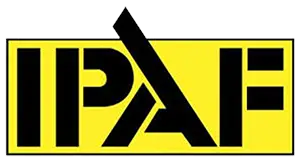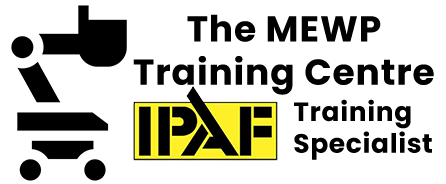IPAF Harness Course
The IPAF Harness Course instructs a user to select, inspect and use a harness and associated equipment safely when using a MEWP.
Certificate on completion.

Duration: Minimum of a half day Maximum number of candidates = 10
Aim: To instruct a candidate to safely select and conduct inspections of harnesses and lanyards used for restraint on a Mobile Elevating Work Platform (MEWP) or Mast Climbing Work Platform (MCWP).
Course Objectives
Objectives: At the end of the course the candidate will:
• Understand the relevant health and safety regulations, guidance and standards.
• Be able to identify and select the correct form of Personal Protective Equipment (PPE) against falls from height when working from a MEWP or MCWP.
• Understand how to check, use, maintain and store a harness and lanyard in accordance with the manufacturer’s instructions.
• Be able to fit and adjust a harness and lanyard.
• Be able to conduct a periodic or an interim inspection on a harness and lanyard used for restraint on a MEWP or MCWP.
• Be able to maintain associated records.
Theory:
• Relevant legislation including HSWA, PPE, CE marking and EN standards.
• Understand hazard analysis and risk assessment.
• The definition of the three categories for safe work at height to include a look at the loads generated when working with MEWPs.
Course Structure
a. Introduction: Facilities, objectives, health and fitness statement.
b. Legislation, standards and guidance: HSWA, MHSWR, PUWER, LOLER, WAHR, PPE, CE Markings and how often you should inspect your harness.
c. Hierarchy of fall protection measures: Safe work at height, avoidance, work restraint, work position and fall arrest.
d. Harness systems: MEWPs & Harnesses, IPAF Harness Statement (H1), Boom Type MEWPs, Vertical Type MEWPs
e. Harness, lanyard and fittings: Harness types, lanyard types, fall distances, fixed vs. adjustable, loops vs. sliders, inertia devices, different connectors.
f. Inspections, pre-use checks and maintaining records: Inspections vs. Examinations, Traceability, Inspections – Harness, Inspections – Lanyard, Effect from damage, Inspection Records.
g. Fitting and adjustment: Incorrect Fitting, Correct Fitting.
h. Usage and anchor points: Typical anchorage points.
i . Storage and maintenance
j. Risk assessment
k. Rescue requirements and options
l. Course assessment: Individual written tests with explanation of pass requirements.
Individual practical inspection assessments with explanation of pass requirements.
Failure means applicant will have to re-sit the course on another day.
A certificate and not a PAL Card will be issued for candidates who do not have an IPAF Operator/Demonstrator or Instructor licence.
